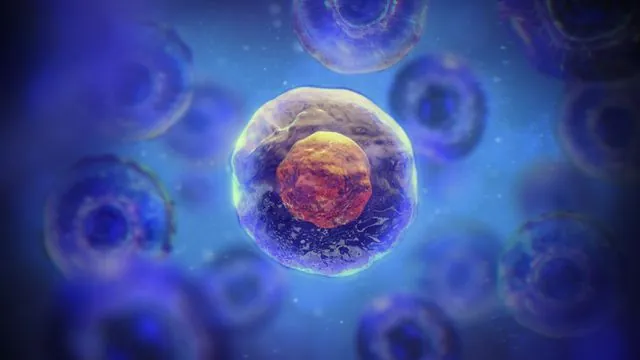
Groundbreaking Discovery of a New Skeletal Tissue Revolutionizes Regenerative Medicine
2025-01-10
Author: Mei
Overview of Lipocartilage
In an exciting advancement for the fields of regenerative medicine and tissue engineering, an international research team led by the University of California, Irvine, has uncovered a previously unknown type of skeletal tissue known as 'lipocartilage.' This remarkable discovery may pave the way for innovative treatment options and a shift in how we approach cartilage reconstruction.
Structural Properties
Lipocartilage, predominantly found in the ears, nose, and throat of mammals, features a unique composition of fat-filled cells called 'lipochondrocytes.' Unlike traditional cartilage, which typically relies on an external extracellular matrix for strength, lipocartilage boasts an internal support system that allows it to maintain a soft, flexible texture—akin to bubble wrap. This structural property is crucial for body parts that require both pliability and stability, such as the earlobes and nasal tip.
Key Findings of the Study
The study, recently published in the journal Science, reveals how lipochondrocytes are capable of creating and managing their own lipid reserves, remaining constant in size regardless of the body’s nutritional status. This means that unlike regular fat cells, lipochondrocytes do not fluctuate in size when faced with changes in food availability.
Potential Applications
Professor Maksim Plikus, a co-author of the study, explained, 'The remarkable resilience of lipocartilage could lead to significant advances in repairing facial injuries or defects without the need for invasive procedures that currently involve grafting tissue from the patient's ribcage. Future applications may involve deriving patient-specific lipochondrocytes from stem cells, allowing for the creation of personalized living cartilage using innovative 3D printing techniques. This could transform treatments for congenital malformations or traumatic cartilage damages.'
Historical Context
The groundwork for this discovery was laid back in 1854 when Dr. Franz Leydig first identified lipochondrocytes in rat ear cartilage. This observation, however, was mostly overlooked until contemporary research utilized advanced imaging and biochemical tools to delve into the complexities of lipocartilage's molecular biology, metabolism, and structural significance.
Genetic Mechanisms
In their groundbreaking investigation, the research team also revealed the genetic mechanisms that inhibit the enzymes responsible for fat breakdown, effectively securing lipochondrocytes’ lipid reserves. Removing these fats renders lipocartilage stiff and fragile, highlighting the essential role of these fat-filled cells in preserving the tissue's durability and flexibility. Intriguingly, some mammals, such as bats, exhibit intricate forms of lipochondrocytes that may enhance hearing by modulating sound waves, showcasing the diverse functions of this tissue.
Future Research
Raul Ramos, the lead author of the study, emphasized the broader implications of this research, stating, 'Our findings challenge existing assumptions within biomechanics and illuminate numerous research avenues. Future studies will aim to uncover how lipochondrocytes achieve long-term stability and the molecular programs regulating their form and function. This research underscores the versatility of lipids in biological systems and their potential applications in tissue engineering.'
Conclusion
As science continues to unravel the secrets of lipocartilage, the future of regenerative medicine looks extraordinarily promising, not only for patients with facial deformities and cartilage diseases but potentially for numerous other medical applications. This revolutionary finding could indeed reshape the landscape of medical treatments in the years to come.
 Brasil (PT)
Brasil (PT)
 Canada (EN)
Canada (EN)
 Chile (ES)
Chile (ES)
 Česko (CS)
Česko (CS)
 대한민국 (KO)
대한민국 (KO)
 España (ES)
España (ES)
 France (FR)
France (FR)
 Hong Kong (EN)
Hong Kong (EN)
 Italia (IT)
Italia (IT)
 日本 (JA)
日本 (JA)
 Magyarország (HU)
Magyarország (HU)
 Norge (NO)
Norge (NO)
 Polska (PL)
Polska (PL)
 Schweiz (DE)
Schweiz (DE)
 Singapore (EN)
Singapore (EN)
 Sverige (SV)
Sverige (SV)
 Suomi (FI)
Suomi (FI)
 Türkiye (TR)
Türkiye (TR)
 الإمارات العربية المتحدة (AR)
الإمارات العربية المتحدة (AR)